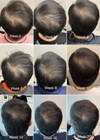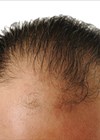Over the last few years platelet rich plasma (PRP) has made a big splash in the aesthetics world causing much excitement. It has been used for skin rejuvenation, softening lines and wrinkles, as part of an anti-ageing process. With the explosion of this procedure into the aesthetic and cosmetic market, the press have dubbed it the ‘vampire facelift’ or ‘Dracula facelift’ – not surprising given its derivation from the patient’s own blood. Although these terms are becoming widely used, they are particularly unflattering and can put some patients off the treatment despite the fact that some very pleasing results are being reported.
PRP has been used in the medical world since the late 1980’s when its use was reported in heart surgery both to reduce preoperative blood loss [1,2] and to reduce wound infections in sternal wounds [3]. Over the years the use of PRP has developed widely and now is used in the cosmetic industry, as well as in orthopaedics, sports medicine and dermatology. In each sphere it is used because of its potential to enhance wound healing, as well as its rejuvenating effects and tissue growth stimulation.
More recently PRP has attracted attention when being used alongside facelift surgery, where it is claimed to reduce pain and swelling, and hair transplantation, where it is claimed it can improve hair density. PRP has been generating some very encouraging results in these areas. One of the earliest studies I could find in 2006 evaluated the results generated from using PRP in male pattern baldness surgery. A significant improvement was reported in both the hair density and the stimulation of follicular growth when the area was treated with PRP prior to the hair transplant surgery [4].
Hair loss basics
We all lose some hair every day; it is quite normal. It can happen in the shower or while brushing hair or towelling dry. On average it is quite normal to lose about 50 - 100 hairs per day. With this amount of hair shedding, the loss does not tend to be noticeable and should not cause thinning patches on the scalp. This level of loss is counted as part of the hair growth cycle and there is usually another hair growing up to replace each one that is lost.
With age, hair becomes thinner and the growth cycle isn’t as effective at replacing the lost hairs. However, not all hair loss is necessarily linked to age and hair loss can be triggered by other factors. These include illness, hormonal changes, side-effects of some medications or even excessive hair styling such as the use of extensions.
What is PRP?
The therapeutic use of platelet rich plasma in medicine is thought to be due to the high content of growth factors which are key in regenerative steps, such as the development of new blood vessels – angiogenesis. The major growth factors within PRP are platelet derived growth factor (PDGF) and transforming growth factor β (TGFβ). Autologous blood concentrates, aimed at both the delivery of biologically active substances such as growth factors, cytokines and fibrin, and at autologous blood cell transplantation (e.g. leukocytes), are now being used in a number of different medical fields with positive results [5].
The optimal PRP platelet concentration is unclear. However the current method by which PRP is prepared should be 300-700% enrichment, with platelet concentrations consequently increasing to more than 1,000,000 platelets/L [6].
The preparation process for PRP is fairly quick and does not require excessive specialised equipment although a centrifuge is required. This means the treatment can be administered relatively easily after a decision to proceed has been made. This makes the treatment an attractive procedure for aesthetic clinics as it can be performed in a non-sterile environment and can be performed as an outpatient-based treatment. In addition, PRP is an autologous treatment, making allergic reactions virtually impossible. It is a very safe procedure and the risks of infection are low.
The disadvantages of PRP stem from the very fact that it is a readily available autologous blood product, as there is no specifically defined way to prepare or administer it. At the current time it is very difficult to define the best practices in using and preparing PRP, given the different clinical indications, methods of preparation and techniques of application [7].
PRP and hair growth research
A paper published by Uebel et al. in 2006 [4] evaluated the effects of treatment of PRP during male pattern baldness surgery. A significant improvement was found in hair density due to stimulation of the hair follicles, when these follicular units were treated with PRP pre-surgery. The authors considered that the platelets stimulated the stem cells in the bulge area of the follicle, stimulating the development of new follicles.
A study by Trink et al. in 2013 [8] was the first to report that PRP was found to increase hair regrowth in patients with alopecia areata compared to triamcinolone acetonide (TrA) or placebo. The results of the study suggested that PRP was a safe and more efficient alternative to the TrA, which is the current treatment of choice.
Subsequently other research studies have been published on the efficacy of PRP on the different types of alopecia [5,9] both of which report an increased patient satisfaction and state a degree of clinical improvement. However these studies acknowledge that the understanding of the mechanism that causes PRP to be successful is not fully understood although the results are promising for the reversal of hair loss.
"PRP is an autologous treatment, making allergic reactions virtually impossible."
The procedure
PRP is harvested from the patient’s own blood. Venous blood is collected by venepuncture from the antecubital fossa in exactly the same way that blood is taken for a normal clinical blood test. It is then spun in a centrifuge, separating the blood components into layers – blood cells (mainly erythrocytes) at the bottom, the buffy coat (mainly platelets) and finally plasma at the top. The platelet layer is collected into a syringe, ready to inject into the patient in the area to be treated.
The method of PRP preparation is essentially the same for the treatment of hair growth treatment as it is for treatment of the face. However, different systems have different variations on the precise protocol used. For the treatment of hair loss, the procedure is performed under local anaesthetic which I personally find to be essential, as the scalp can be very sensitive. Often my patients will report some localised sensitivity in the area injected for a few days once the local anaesthetic has worn off, but this does not prevent normal activities being resumed.
Although research is lacking, it does appear that good results require aftercare advice to be followed for approximately four weeks post-procedure. It is advised that patients avoid using shampoos containing sulphides, hair colouring and even having their hair cut, to minimise trauma to the area. There is no research to suggest patients should refrain from using topical treatments for hair loss after this procedure such as Regaine®, Alpecin® and Viviscal®, or oral medication such as finasteride.
The first signs of improvement are commonly reported at four weeks, although it is wise to advise patients not to expect any significant change for three to six months, which is usually when a visible result can be seen. However, each patient is different and the level of improvement and results vary according to patient response. Satisfaction depends, as with all aesthetic procedures, on patient expectations. Generally one treatment gives a positive result. However, it is not uncommon to have a second session at three months for further improvement.
Patients who have been treated in our clinic to date have all noticed an improvement, with the following being reported:
- A significant reduction or actual cessation of hair shedding.
- The quality of the hair has improved e.g. less dry and brittle.
- Hair feels thicker and has more volume. Advantages of using PRP therapy for hair loss from the scalp:
- There is no risk of transmissible infections from the PRP.
- It is a natural alternative to a more invasive surgical procedure, although it can also be used alongside, or as part of, a transplant procedure to achieve optimal results.
- Encouraging results have been published on the efficacy of the treatment.
- Very low risk of allergic reactions to treatment.
- PRP treatment does not need to be performed in a sterile environment.
- The price of treatment is affordable compared to treatment alternatives.
Conclusion
The very characteristics that make PRP a natural and therapeutic treatment, by using the patient’s own blood, means that, by definition, it will never be a completely standardised treatment. Hopefully with further research and development, a set of protocols can be developed to find the best method to obtain optimum results in the majority of patients [7].
Such protocols would give us the opportunity to customise this treatment according to individual patient characteristics and the indication for treatment.
PRP therapy has shown encouraging results as a standalone treatment for hair loss, but also in conjunction with hair transplant procedures. There is a clear need for further research to be carried out to establish the precise mechanism by which PRP promotes the increase of hair growth and this could lead to further improvements in treatment protocols. Even before this research is available, PRP is clearly an exciting development in the field of treatment of hair loss or hair thinning.
References
1. Giordano GF, Rivers SL, Chung GK, et al. Autologous platelet-rich plasma in cardiac surgery: effect on intraoperative and postoperative transfusion requirements. Ann Thorac Surg 1988;46(4):416-9.
2. Misumi T, Kiso I, Nagumo M, et al. Effect of autologous platelet rich plasma on adult open heart surgery.(Japanese Language). Nihon Kyobu Geka Gakkai Zasshi 1995;43(1):6-9.
3. Woods EL. Improve Sternal Wound Healing with Platelet Rich Plasma 2008;
http://www.terumo-cvs.com/optimizing
/improve_sternal_wound_healing
_with_platelet_rich_plasma.shtml
last accessed March 2015.
4. Uebel CO, da Silva JB, Cantarelli D, Martins P. The role of platelet plasma growth factors in male pattern baldness surgery. Plast Reconstr Surg 2006;118:1458-66.
5. Giovanni S, Desanka R, et al. Platelet-Rich Plasma for Androgenetic Alopecia: A Pilot Study. American Society for Dermatologic Surgery 2014;40:1010-9.
6. Zheng Jun Li, Hye-In Choi, et al. Autologous Platelet-Rich Plasma: A Potential Therapeutic Tool for Promoting Hair Growth. American Society for Dermatologic Surgery 2012;38:1040-6.
7. Textor J. Platelet-Rich Plasma (PRP) as a Therapeutic Agent: Platelet Biology, Growth Factors and a Review of the Literature. In: Lana JFSD, Andrade Santana MH, Dias Belangero W, Malheiros Luzo AC (Eds.). Platelet-Rich Plasma: Regenerative Medicine: Sports Medicine, Orthopedic, and Recovery of Musculoskeletal Injuries. Springer; Berlin, Germany; 2014.
8. Trink A, Sorbellini E, et al. A randomized, double-blind, placebo- and active-controlled, half-head study to evaluate the effects of platelet-rich plasma on alopecia areata. British Journal of Dermatology 2013;169:690-4.
9. Swapna SK, Yuvraj EM et al. Platelet-Rich Plasma in Androgenic Alopecia: Myth or an Effective Tool. Journal of Cutaneous and Aesthetic Surgery 2014;7(2):107-10.
Declaration of competing interests: The author is the UK trainer for YMT for PRP for the scalp.
COMMENTS ARE WELCOME







